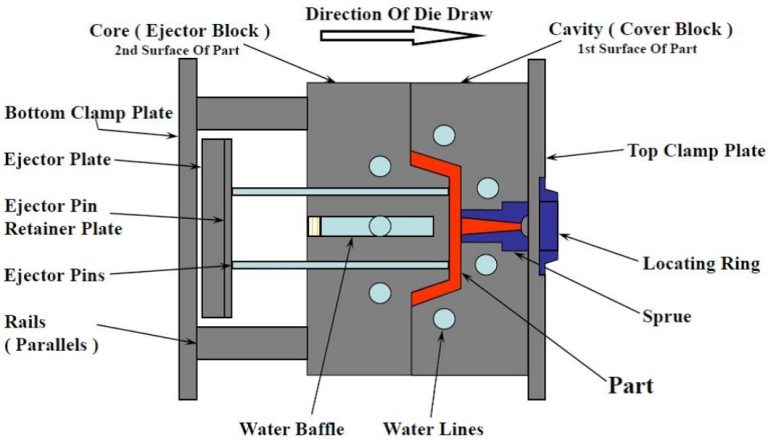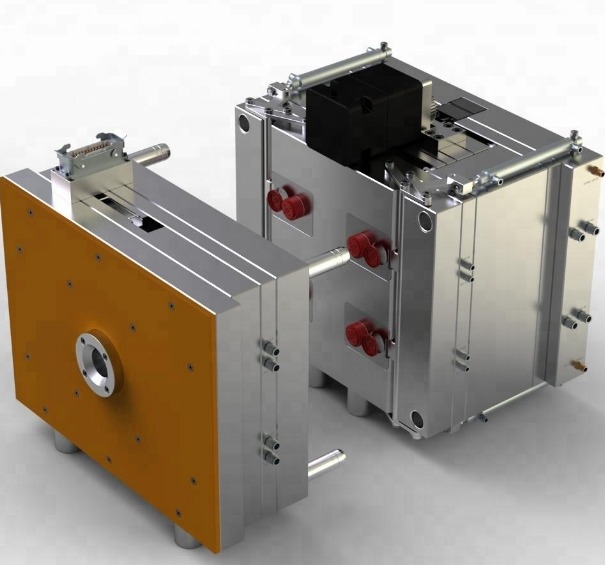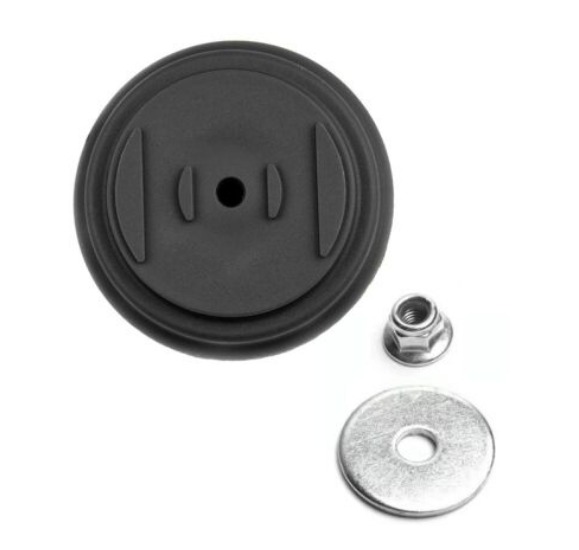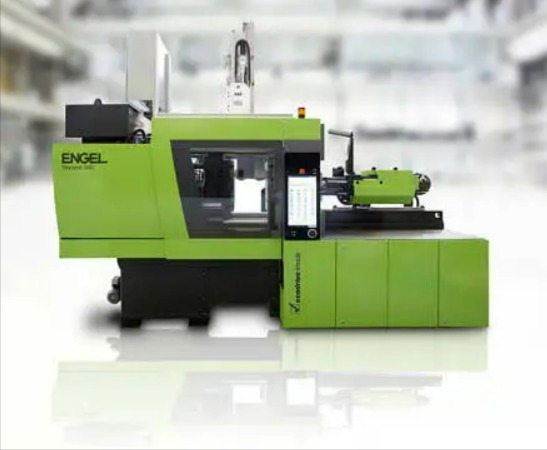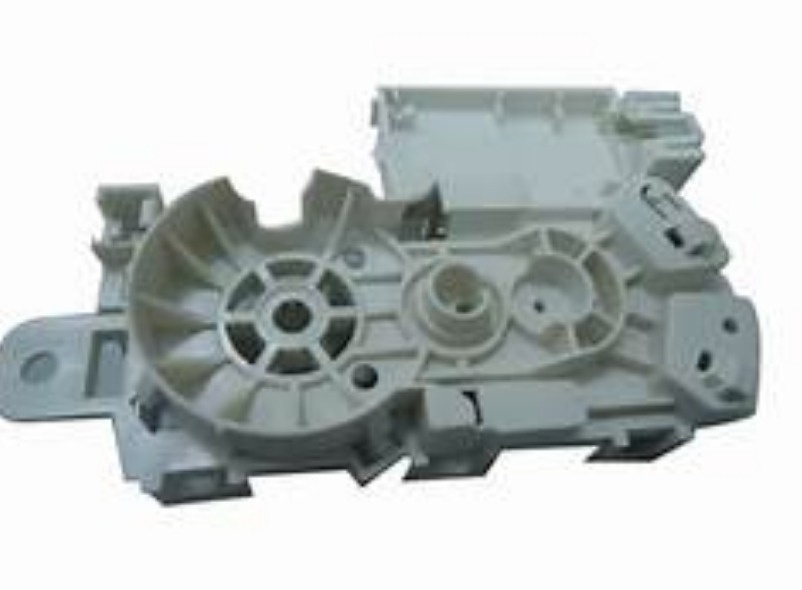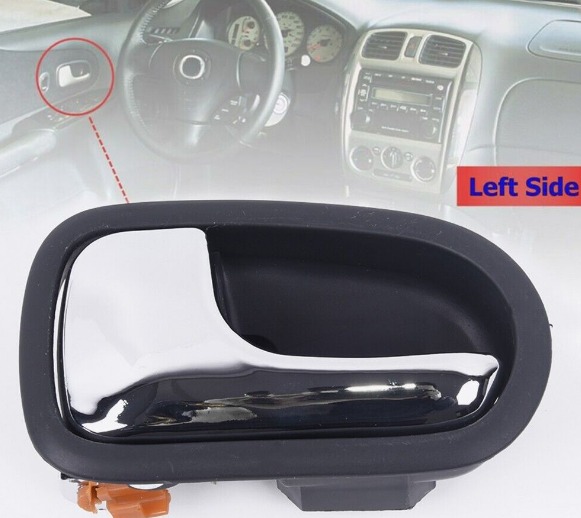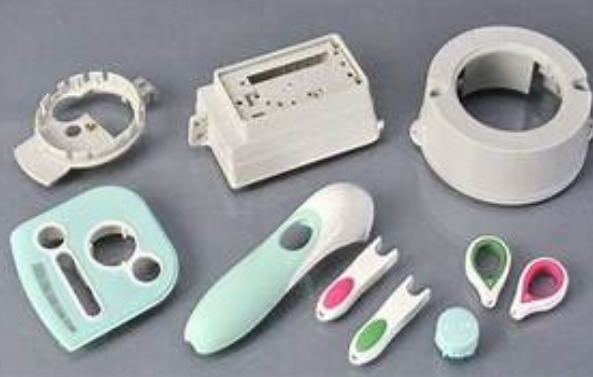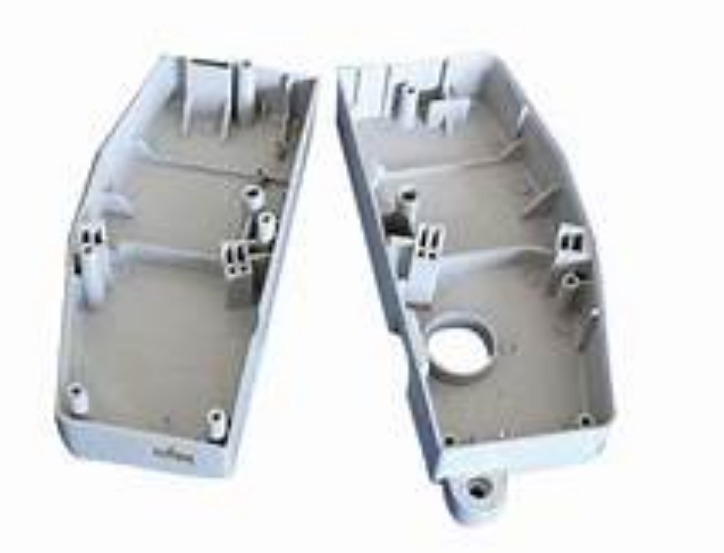Introduction
In the world of manufacturing, injection moulding is a widely used and highly efficient process for producing a vast array of plastic products. From the tiny components inside your electronic devices to the large housings of household appliances, injection moulding plays a crucial role. Central to understanding and optimizing this process is the injection moulding diagram.
What is an Injection Moulding Diagram?
An injection moulding diagram is a visual representation that details every aspect of the injection moulding process. It serves as a roadmap, guiding engineers, manufacturers, and operators through the complex steps involved in creating plastic parts. This diagram typically includes the following key elements:
- Mould Components: It shows the different parts of the mould, such as the fixed half and the moving half. These halves come together to form the cavity where the molten plastic will take shape. For example, the core, which is a part of the mould, determines the internal features of the plastic product. A well - designed mould is essential for high - quality injection - moulded parts, and the diagram helps in visualizing how these components interact.
- Injection Unit: This part of the diagram depicts the machinery that melts the plastic pellets and injects them into the mould. It includes components like the hopper, where the plastic pellets are stored, the screw, which conveys and melts the plastic, and the nozzle, through which the molten plastic is forced into the mould cavity. The injection unit is the heart of the injection moulding process, and the diagram gives a clear picture of how it functions.
- Gating System: The gating system in the injection moulding diagram shows how the molten plastic enters the mould cavity. Gates can be of different types, such as edge gates, pin gates, or film gates. Each type has its own advantages and is chosen based on the design of the plastic part. For instance, a pin gate is often used for small, precise parts as it allows for better control of the plastic flow.
- Cooling System: Since plastic needs to cool and solidify in the mould to take the desired shape, the cooling system is a vital part of the injection moulding process. The diagram will illustrate the channels within the mould through which a coolant (usually water) flows. Efficient cooling is crucial for reducing cycle times and ensuring consistent part quality.
Key Components of an Injection Moulding Diagram
The Mould
The mould is the core component of the injection moulding process. It is typically made of high - strength steel to withstand the high pressures and temperatures during injection. Structurally, it consists of two main parts: the fixed half (also known as the cavity half) and the moving half (also known as the core half).
The cavity is the space within the mould where the molten plastic takes the shape of the final product. For example, if you are producing a plastic toy car, the cavity will have the exact shape of the outer body of the toy car. The core, on the other hand, forms the internal features. If the toy car has a hollow interior, the core will be designed to create that hollow space. The accuracy of the mould's cavity and core is crucial. Even a slight deviation in their dimensions can lead to products with incorrect sizes or poor surface finishes. A well - maintained mould can produce thousands or even millions of high - quality parts before it needs to be replaced or refurbished.
Injection Unit
The injection unit is responsible for melting the plastic pellets and injecting the molten plastic into the mould. Key components within this unit include the hopper, screw, and barrel.
The hopper is where the plastic pellets are initially stored. It feeds the pellets into the barrel at a controlled rate. The screw, which rotates within the barrel, plays a multi - faceted role. As it rotates, it conveys the plastic pellets forward along the barrel. The barrel is equipped with heating elements, which can be electrical resistance heaters. These heaters raise the temperature of the barrel, and as the plastic pellets move along the screw, they are gradually heated and melted due to the combination of the heat from the barrel and the frictional heat generated by the rotation of the screw.
Once the plastic is fully melted and homogenized, the screw then acts as a piston. It pushes the molten plastic forward towards the nozzle. The nozzle is the final passage through which the molten plastic is injected into the mould cavity. The injection pressure can range from several hundred to several thousand pounds per square inch (psi), depending on the complexity of the mould and the properties of the plastic material. For instance, when moulding thin - walled plastic containers, a higher injection pressure might be required to ensure that the molten plastic fills the entire cavity quickly before it starts to cool and solidify.
Clamping Unit
The clamping unit's primary function is to hold the mould firmly closed during the injection process. This is essential because the high - pressure injection of molten plastic into the mould cavity exerts a significant force that could otherwise cause the mould to open prematurely, resulting in defective products.
The main components of the clamping unit are the stationary platen, moving platen, and the clamping mechanism. The stationary platen is fixed in place, while the moving platen can be actuated to close the mould. The clamping mechanism can be hydraulic, mechanical, or a combination of both. In hydraulic clamping systems, large hydraulic cylinders generate the force required to move the moving platen and hold the mould closed. Mechanical clamping systems often use toggle mechanisms, which provide a mechanical advantage to achieve high clamping forces.
The clamping force is a critical parameter. It is measured in tons and can range from a few tons for small injection moulding machines used in prototyping to thousands of tons for large - scale industrial machines. For example, a typical small - to - medium - sized injection moulding machine might have a clamping force of 50 - 200 tons, while large machines used for automotive component production can have clamping forces exceeding 1000 tons. The right clamping force must be selected based on the size and complexity of the mould, as well as the type of plastic being processed.
Understanding the Injection Moulding Process through the Diagram
Plasticization
Plasticization is the first crucial stage in the injection moulding process. Plastic pellets are fed into the hopper of the injection unit. As they enter the barrel, the heating elements surrounding the barrel start to raise the temperature. The screw within the barrel rotates, conveying the pellets forward. This rotation also generates frictional heat, which, combined with the heat from the barrel, causes the plastic pellets to melt.
For example, when processing polypropylene (PP) plastic, the barrel temperature might be set in the range of 180 - 230°C. As the screw rotates at a speed, say, between 50 - 150 revolutions per minute (RPM), the plastic gradually transitions from solid pellets to a molten, viscous state. A graph can be used to show the relationship between the temperature along the length of the barrel and the screw rotation speed. As the screw speed increases, the frictional heat generated increases, which can lead to a faster melting of the plastic, but also risks overheating the plastic and causing degradation.
Injection
Once the plastic is fully plasticized, the injection stage begins. The molten plastic, which is now in a highly viscous and flowable state, is pushed forward by the screw acting as a piston. High - pressure pumps are used to generate the force required for injection. The injection pressure can range from as low as 500 psi for simple parts made of low - viscosity plastics to over 3000 psi for complex, thin - walled parts or high - viscosity plastics.
The injection speed is also a critical factor. A high - speed injection is often required for parts with intricate details or long flow paths to ensure that the molten plastic fills the entire mould cavity before it starts to cool and solidify. A dynamic diagram or video can be extremely helpful here. It can show how the molten plastic, under high pressure, rushes through the gating system and into the mould cavity, quickly taking the shape of the cavity. For instance, when producing a small, detailed plastic figurine, a high - speed injection at around 80 - 100 mm/s might be needed to accurately replicate all the fine features of the design.
Cooling and Solidification
After the mould cavity is filled with molten plastic, the cooling and solidification stage commences. This stage is essential for the plastic to take the final shape of the product. The mould is equipped with a cooling system, typically consisting of channels through which a coolant, usually water, flows. The coolant absorbs the heat from the molten plastic, causing it to cool and solidify.
The cooling time is a crucial parameter that affects both the quality of the product and the production cycle time. If the cooling time is too short, the plastic may not have fully solidified, leading to parts with warping, shrinkage, or poor dimensional stability. On the other hand, if the cooling time is too long, it reduces the production efficiency. For a typical medium - sized plastic part made of ABS plastic, the cooling time might range from 10 - 30 seconds. A graph can be used to analyze the relationship between the cooling time and the quality of the product, such as the degree of shrinkage or the level of internal stress in the part.
Ejection
Once the plastic has cooled and solidified into the desired shape, it is time for the ejection stage. The mould opens, and the ejection system comes into action. The ejection system usually consists of ejector pins, ejector plates, and sometimes air - assisted ejection mechanisms.
The ejector pins are strategically placed within the mould. When activated, they push against the solidified plastic part, forcing it out of the mould cavity. For example, in the production of plastic bottle caps, ejector pins are located at the bottom of the cap cavity. When the mould opens, the ejector pins move forward, pushing the bottle caps out of the mould. The force exerted by the ejector pins needs to be carefully calibrated. If the force is too low, the part may not be ejected properly, and if it is too high, it can cause damage to the part, such as cracking or deformation.
Yigu Technology's View
As a non - standard plastic metal products custom supplier, Yigu Technology highly values the injection moulding diagram. It serves as the cornerstone of our custom production process. Firstly, the diagram is crucial for us to accurately understand customer requirements. When clients provide their design concepts, the injection moulding diagram allows us to visualize the product's structure, dimensions, and intricate details. This ensures that we are on the same page as the customers right from the start, minimizing misunderstandings and potential errors.
Secondly, it plays a significant role in optimizing our production 流程. By analyzing the injection moulding diagram, we can determine the most suitable materials, select the appropriate injection moulding machines, and fine - tune the processing parameters. This not only improves production efficiency but also helps us control costs. For example, through diagram - based analysis, we can identify areas where we can reduce material waste or shorten the cooling time without sacrificing product quality. Overall, the injection moulding diagram is an essential tool that enables us to deliver high - quality, customized products to our clients efficiently.
FAQ
What are the common mistakes when reading an injection moulding diagram?
- Misinterpreting Dimension Marks: One common error is misinterpreting the dimension marks on the diagram. For example, confusing the units (such as mixing up millimeters and inches) can lead to significant errors in mould manufacturing and product production. To avoid this, always double - check the unit notations on the diagram and be familiar with the standard units used in the industry.
- Overlooking Tolerance Requirements: Tolerances are crucial in injection moulding as they define the acceptable range of variation in dimensions. Ignoring tolerance requirements can result in parts that do not fit together properly or do not meet the desired quality standards. Make sure to pay close attention to the tolerance values specified for each dimension on the diagram.
- Ignoring Symbol Meanings: Injection moulding diagrams use various symbols to represent different components and features. Failing to understand these symbols can cause misunderstandings. For instance, not knowing that a particular symbol represents a cooling channel might lead to overlooking the importance of proper cooling during the manufacturing process. Keep a reference guide of common symbols handy when reading the diagram.
How can I improve the accuracy of my injection moulding diagram?
- Use Professional Drawing Software: Employing professional CAD (Computer - Aided Design) software can significantly enhance the accuracy of your injection moulding diagram. These software tools offer precise measurement capabilities, easy - to - use drawing tools, and the ability to create 3D models that can be rotated and viewed from different angles for a more comprehensive understanding.
- Conduct Multiple Reviews: Have multiple people review the diagram, including experienced engineers, designers, and quality control personnel. Each person may notice different details or potential errors. For example, an engineer might focus on the technical feasibility of the design, while a quality control expert could identify areas where the diagram might lead to quality issues.
- Refer to Standards and Best Practices: Adhere to industry - recognized standards for injection moulding diagrams, such as those related to dimensioning, symbol usage, and tolerancing. Additionally, study best practices from successful injection moulding projects to ensure that your diagram incorporates the latest and most effective techniques.
Are there any industry standards for injection moulding diagrams?
Yes, there are several industry standards for injection moulding diagrams:
- Dimensional Tolerance Standards: Standards like ISO 2768 define general tolerances for linear and angular dimensions in mechanical engineering, which are applicable to injection moulding. These standards specify the allowable deviation from the nominal dimensions, ensuring that parts can be produced with consistent quality and fit together as intended.
- Symbol Representation Standards: There are standard symbols used to represent different components in injection moulding diagrams. For example, specific symbols are used to denote gates, cooling channels, ejector pins, etc. These standardized symbols are recognized across the industry, making it easier for engineers, manufacturers, and suppliers to communicate and understand the design.
- Drafting Standards: Standards such as those from the American Society of Mechanical Engineers (ASME) provide guidelines on how to create clear and accurate technical drawings. This includes rules on line thickness, text size and style, and the proper way to dimension and annotate the diagram.
